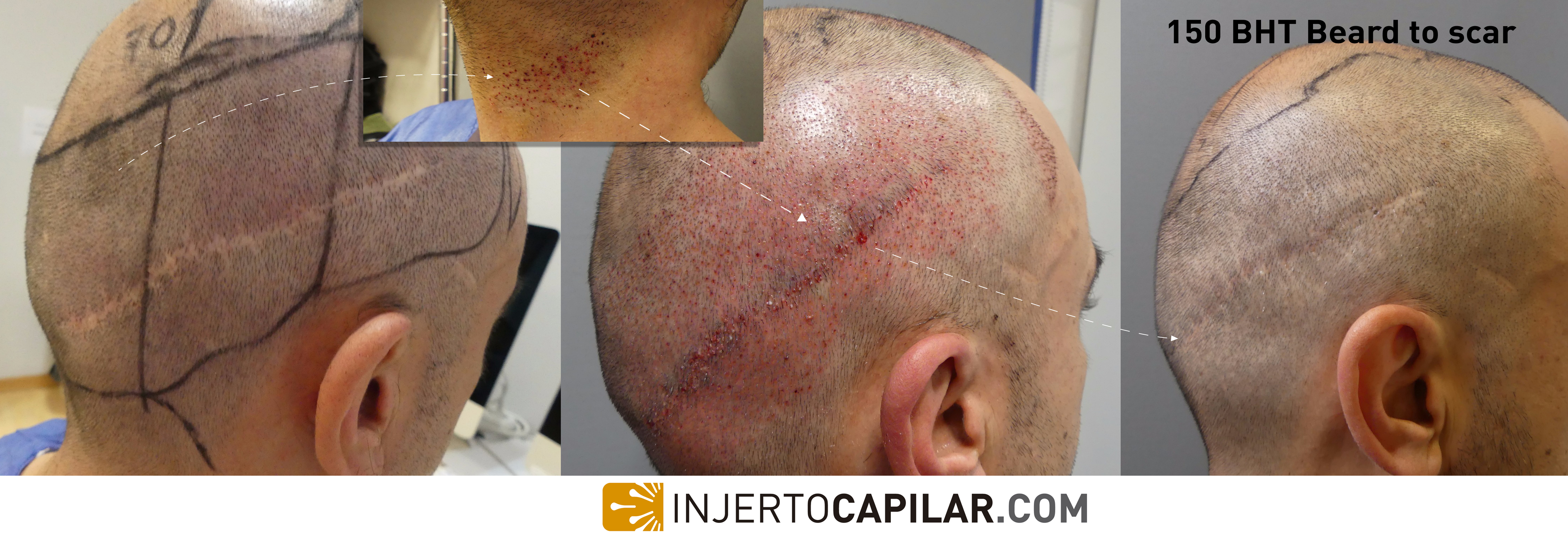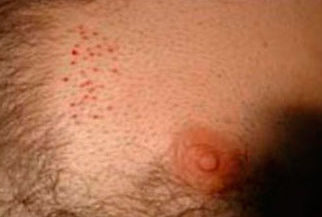Hair transplant using body hair (BHT)
The FUE technique is ideal for the use of body hair as an additional donor area, but we have to be careful as there are high expectations related to the technique. The body hair transplant (BHT: Body Hair Transplant) consists of extracting follicular units from areas of the body which are different to the scalp.
Certain factors must be kept in mind such as the quality of the hair, texture or thickness, growth rate, number of hairs per follicular unit and density of the donor area

These factors mean that the main use of body hair is to provide additional density or “filling” in cases where the donor area in the scalp is insufficient to cover the alopecia. Hair from the thorax, abdomen or beard is the most frequently used, and as previously mentioned are useful for filling up the areas posterior to a transplant (zones C and D), mixed with hairs transplanted from the scalp. In our opinion, body hair should never be used in the frontal hair line.
Those of us who began working with FUE almost ten years ago began offering BHT using criteria based on commercial reasons rather than experience
The results, however, made us more wary and urged us to evaluate carefully whether a patient could be a good candidate for body hair transplant. Only one surgeon has continued to post positive results on the internet, Dr. Umar in California
BHT has the following disadvantages:
- The units are of one and very rarely two hairs: the product of the extraction (hairs / units) is considerably lower
- Technical difficulties: the corporal hair exits the skin at a more acute angle than the scalp hair, making the level of transection much larger
- Extraction velocity: the average extraction rate in the scalp is 300 units per hour. In BHT, the best ranges from 100 units per hour (400 units of 1 hair, rarely 2, in 4 hours…)
- Coverage: there is much less hairs per unit and normally they are of less thickness, meaning that coverage is bare
Irrespective of how much density is achieved with the implants, fine hair simply doesn’t cover
as well (this is what occurs to the miniaturized hair in the scalp due to the effect of the androgens, it becomes finer and fails to cover). To occupy a space with a finely haired unit is to lose a space in which we could have placed a thicker unit with three hairs. If we look at the forearms, no matter how much density we achieve, the hairs on the forearm never completely cover the skin.
From all of these points it can be deduced that using BHT requires an individual evaluation to determine if the patient is a suitable candidate and if we can offer them the possibility of increasing the number of units of their transplant.





